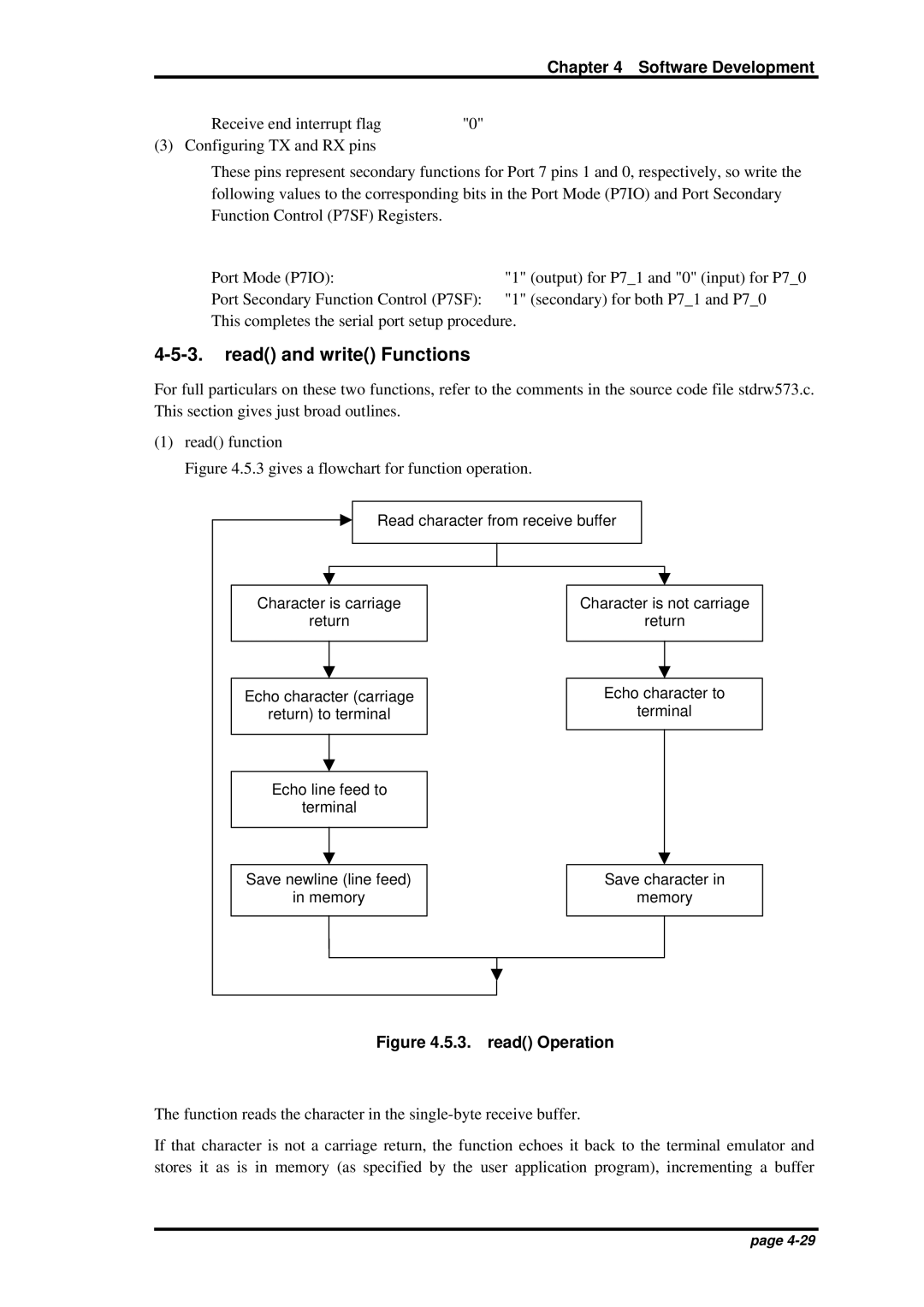
Chapter 4 Software Development
Receive end interrupt flag | "0" |
(3) Configuring TX and RX pins |
|
These pins represent secondary functions for Port 7 pins 1 and 0, respectively, so write the following values to the corresponding bits in the Port Mode (P7IO) and Port Secondary Function Control (P7SF) Registers.
Port Mode (P7IO): | "1" | (output) for P7_1 and "0" (input) for P7_0 |
Port Secondary Function Control (P7SF): | "1" | (secondary) for both P7_1 and P7_0 |
This completes the serial port setup procedure.
4-5-3. read() and write() Functions
For full particulars on these two functions, refer to the comments in the source code file stdrw573.c. This section gives just broad outlines.
(1)read() function
Figure 4.5.3 gives a flowchart for function operation.
Read character from receive buffer | |
Character is carriage | Character is not carriage |
return | return |
Echo character (carriage | Echo character to |
return) to terminal | terminal |
Echo line feed to |
|
terminal |
|
Save newline (line feed) | Save character in |
in memory | memory |
Figure 4.5.3. read() Operation
The function reads the character in the
If that character is not a carriage return, the function echoes it back to the terminal emulator and stores it as is in memory (as specified by the user application program), incrementing a buffer
page
